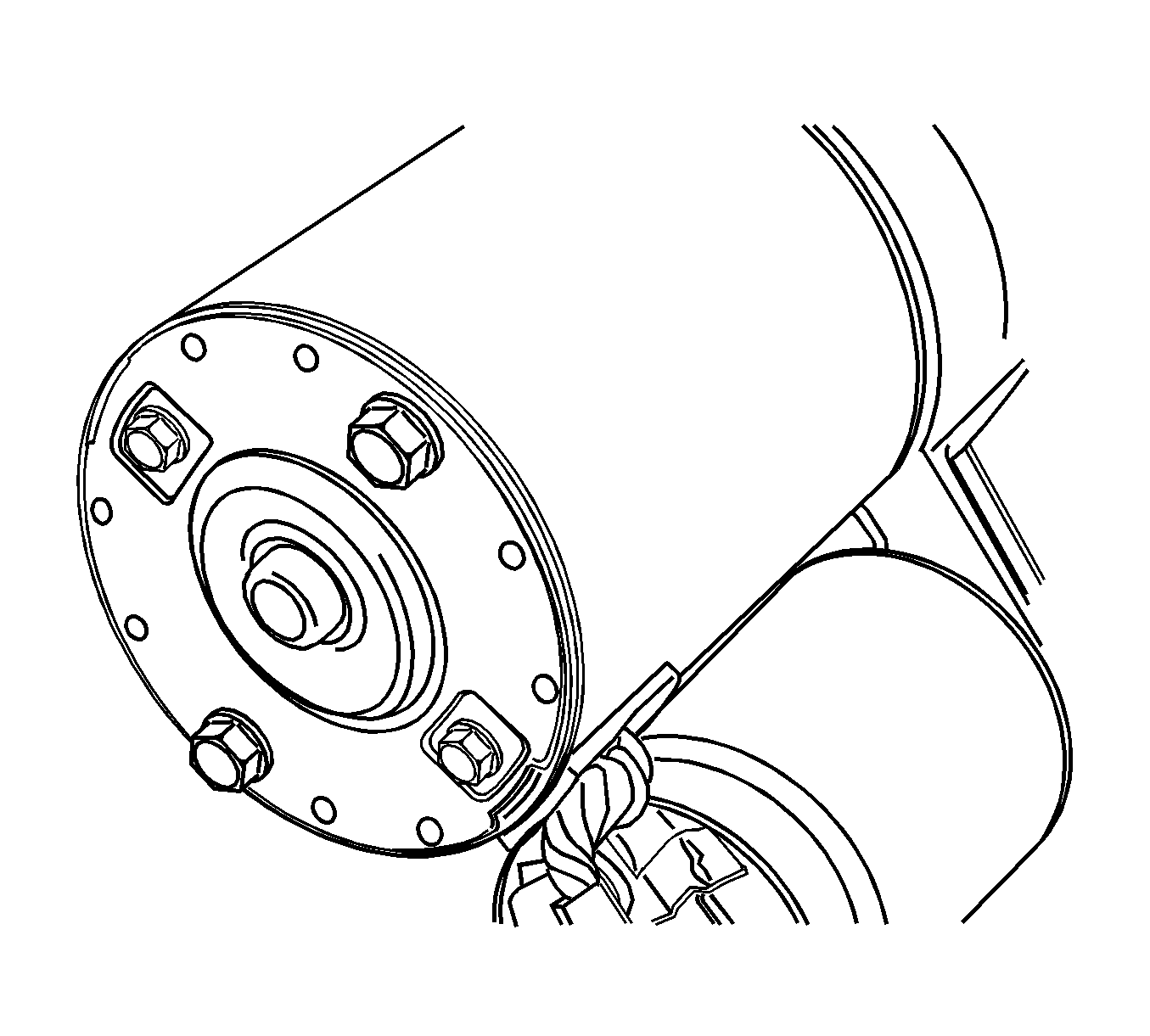
- Remove the starter. Refer to
Starter Motor Replacement
.
- Remove the starter through-bolts.

- Remove the commutator end frame and brush holder assembly.
- Inspect the brushes, the pop-out springs, and the brush holders for wear and damage. Replace the assembly, if needed.
- Inspect the armature to see if it turns freely. If the armature does not turn freely, break down the assembly immediately, starting with step 14. Otherwise, give the armature a no-load test.
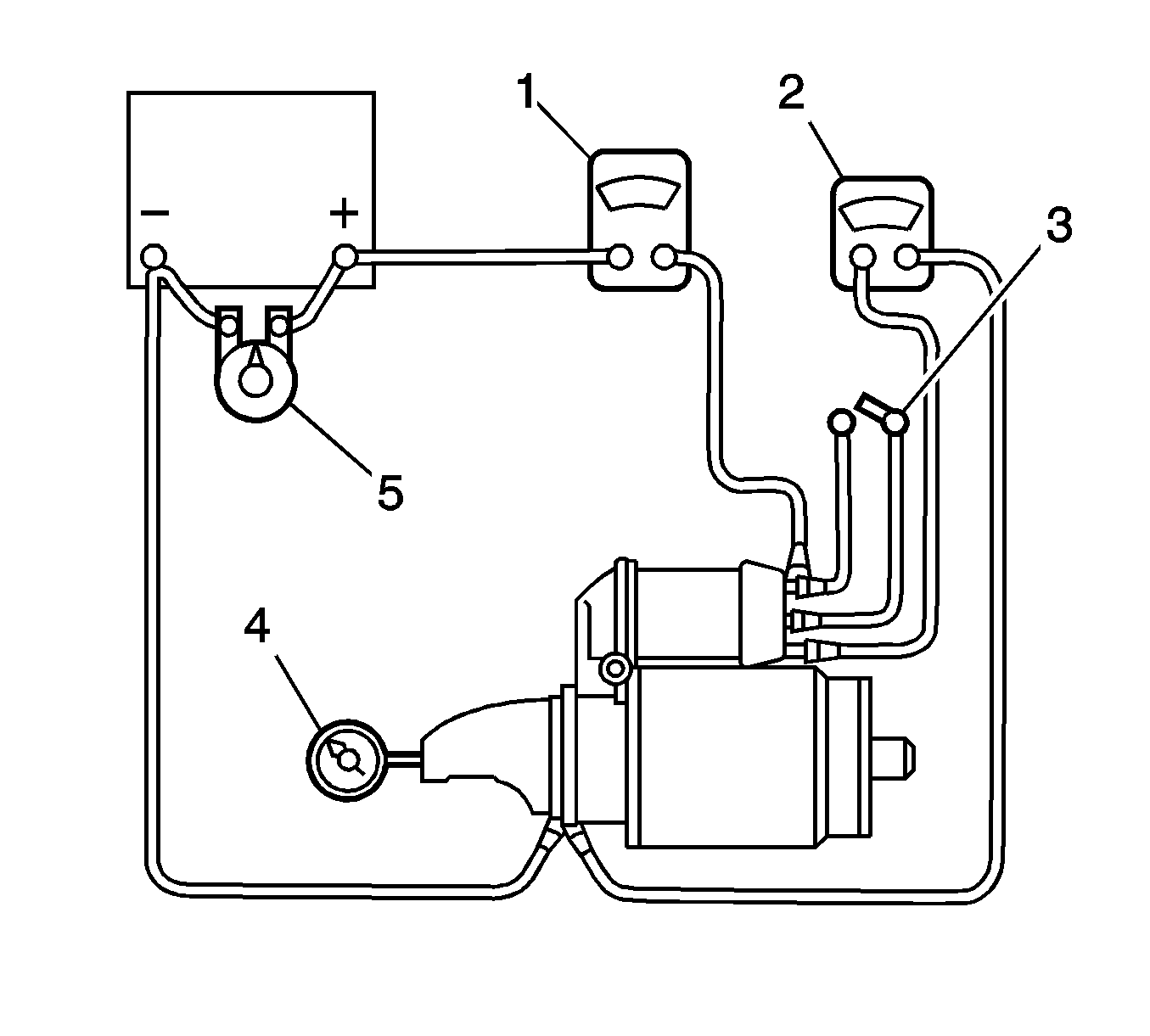
Notice: Complete the testing as quickly as possible in order to prevent overheating
and damaging the solenoid.
Important: If the specified current draw does not include the solenoid, deduct from the armature reading the specified current draw of the solenoid hold-in winding.
- To begin the no-load test, close the switch (3) and compare the RPM (4), the current (1), and the voltage (2) readings with the specifications. Refer to
Starter Motor Usage
. Make disconnections only with the switch
open. Use the test results as follows:
| 6.1. | Rated current draw and no-load speed indicate a normal condition for the starter motor. |
| 6.2. | Low RPM combined with high current draw is an indication of excessive friction caused the following conditions: |
| • | Tight, dirty, or worn bearings |
| 6.3. | Failure to operate with high current draw indicates a direct ground in the terminal or fields, or frozen bearings. |
| 6.4. | Failure to operate with no current draw indicates the following conditions: |
| • | High insulation between the commutator bars |
| • | Other causes which would prevent good contact between the brushes and the commutator |
| 6.5. | Low, no-load speed, and low current indicate high internal resistance and high current draw, which usually mean shorted fields. |

- Remove the solenoid assembly screws.
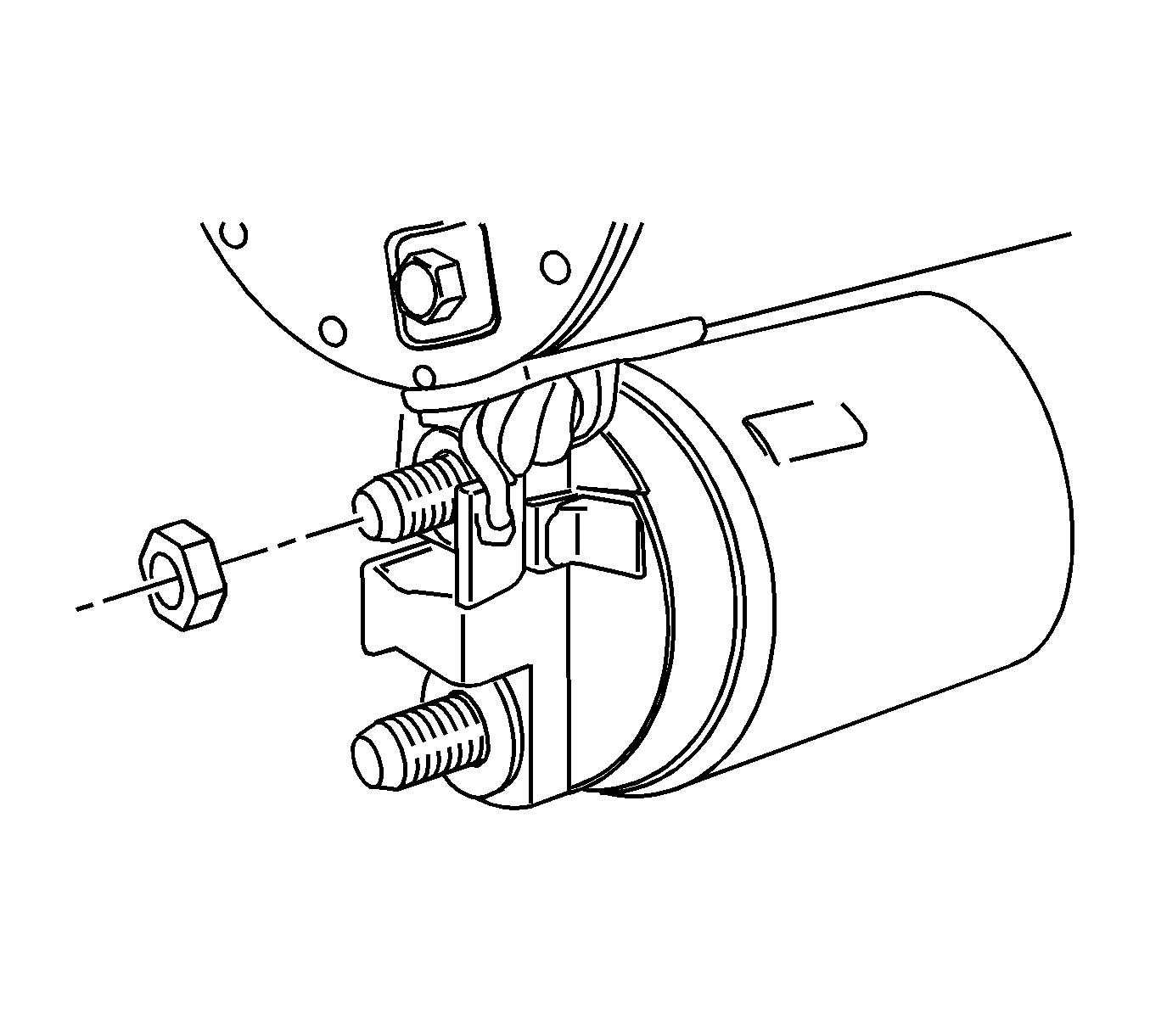
- Remove the field connector nut. Disconnect the field connector.
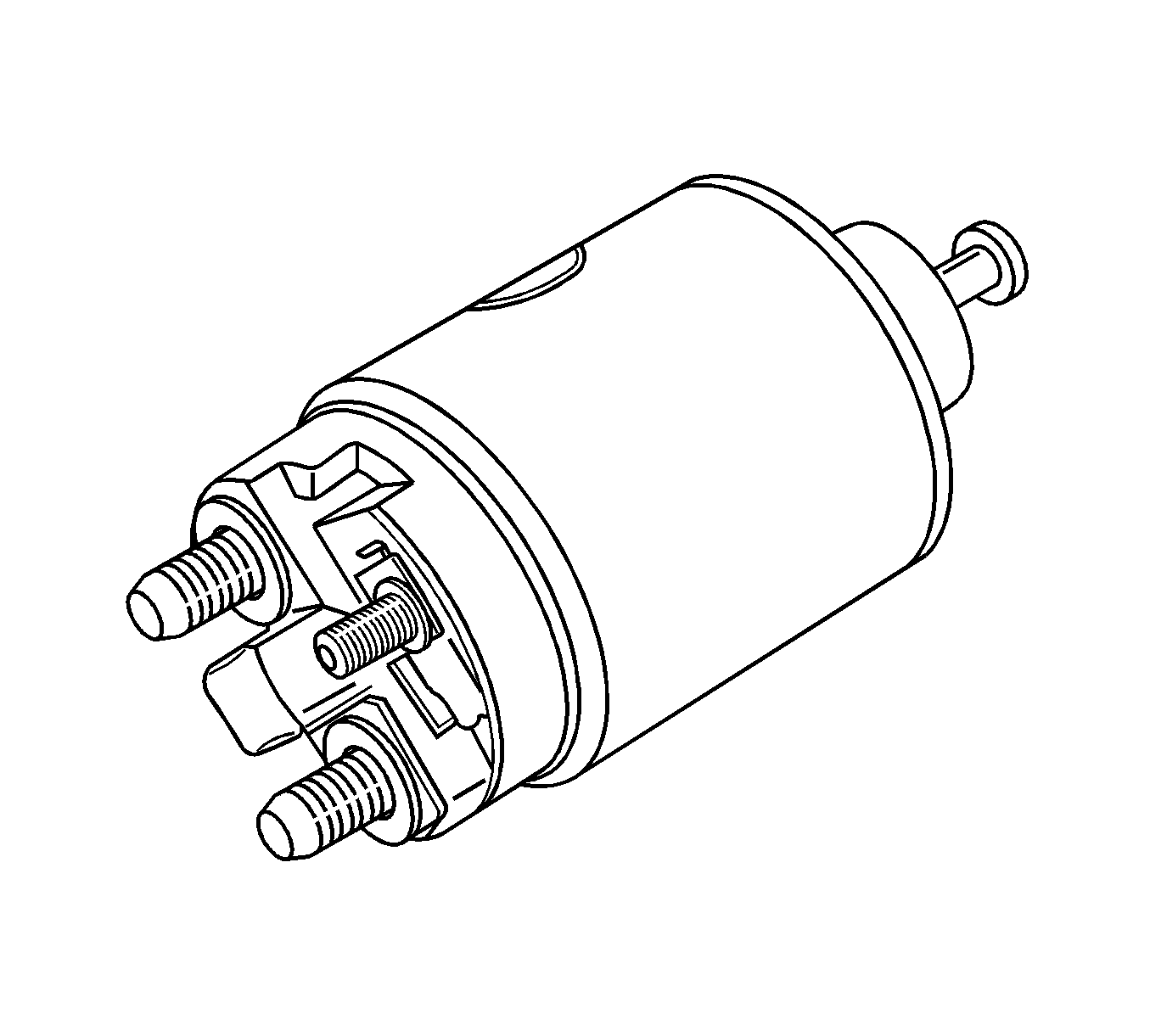
- Remove the plunger return spring.

Important: If the solenoid is not removed from the starting motor, the connector strap terminals must be removed from the terminal on the solenoid before making these tests.
- Test the solenoid windings by checking the current draw.
| 10.1. | Inspect the hold-in windings by connecting an ammeter (3) in series with a 12-volt battery, the switch terminal, and to ground. |
| 10.2. | Connect the carbon pile (4) across the battery. |
| 10.3. | Adjust the voltage to 10 volts. The ammeter reading should be 13-19 amperes. |
Important: Current will decrease as the windings heat up. Current draw readings that are over specifications indicate shorted turns or a ground in the windings of the solenoid. Both conditions require replacement of the solenoid.
Current draw readings that are under specifications indicate excessive resistance. No reading indicates an open circuit.
- Inspect both windings, connecting them according to the preceding test.
| 11.1. | Ground the solenoid motor terminal. |
| 11.2. | Adjust the voltage to 10 volts. The ammeter reading should be 59-79 amperes. |
| 11.3. | Inspect the connections and replace the solenoid, if necessary. |
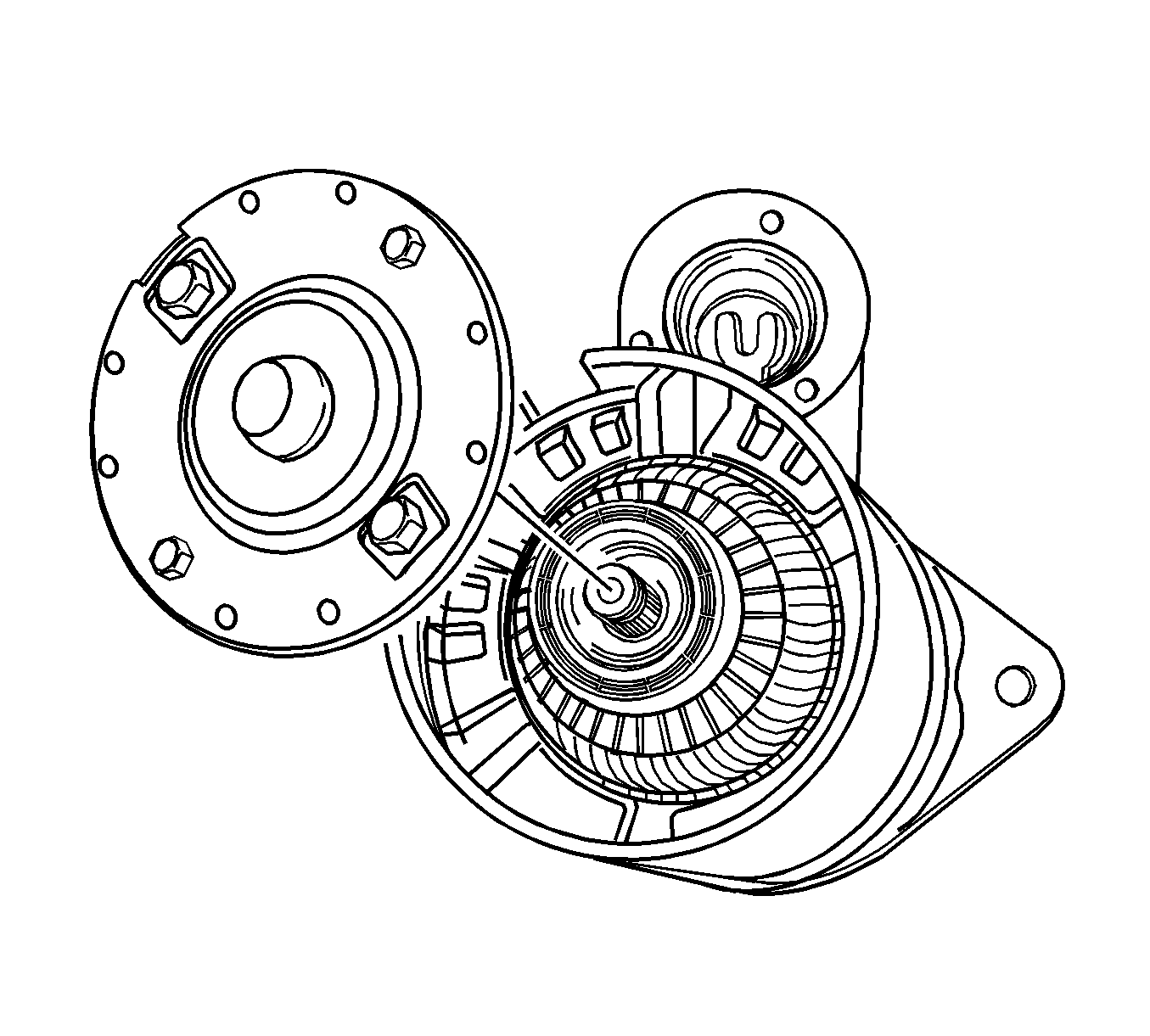
- Slide the field frame with the enclosed armature assembly away from the starter assembly.
- Remove the shield.

- Separate the field frame from the armature.
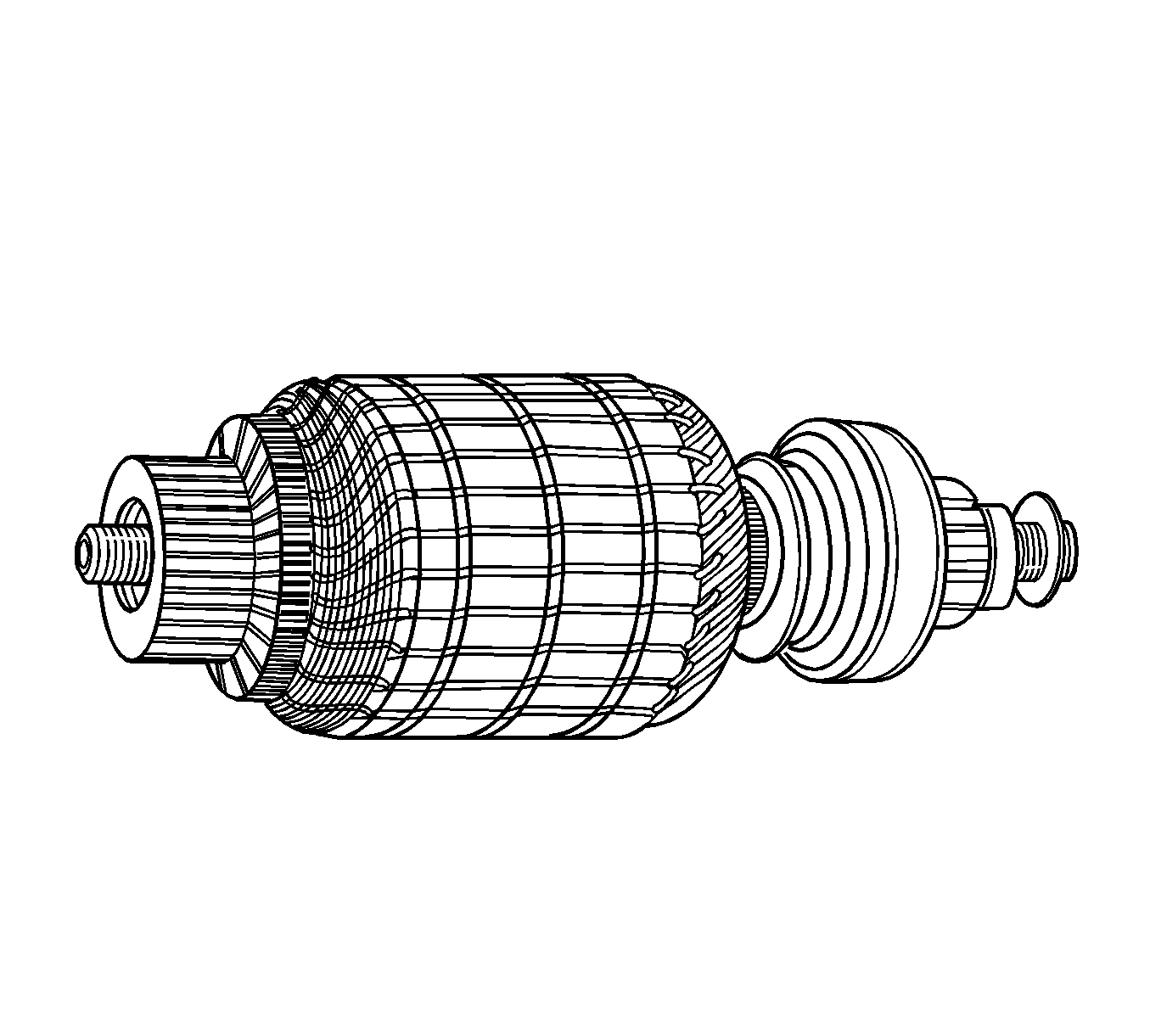
- Inspect the shaft and the pinion for the following conditions and replace, if necessary:
- Inspect the armature commutator. If the commutator is rough, it should be turned down. The outside diameter of the commutator must measure at least 26.9-27.1 mm (1.059-1.067 in) after it is undercut or turned. Do not turn
out-of-round commutators.
- Inspect the points where the armature conductors join the commutator bars. Make sure they have a good connection. A burned commutator bar is usually evidence of a poor connection.
- If test equipment is available, test the armature for short circuits by placing it on a growler, and holding back a saw blade over the armature core while the armature is rotated. If the saw blade vibrates, replace the armature.
- Test the armature after cleaning between the commutator bars. If the saw blade vibrates, replace the armature.
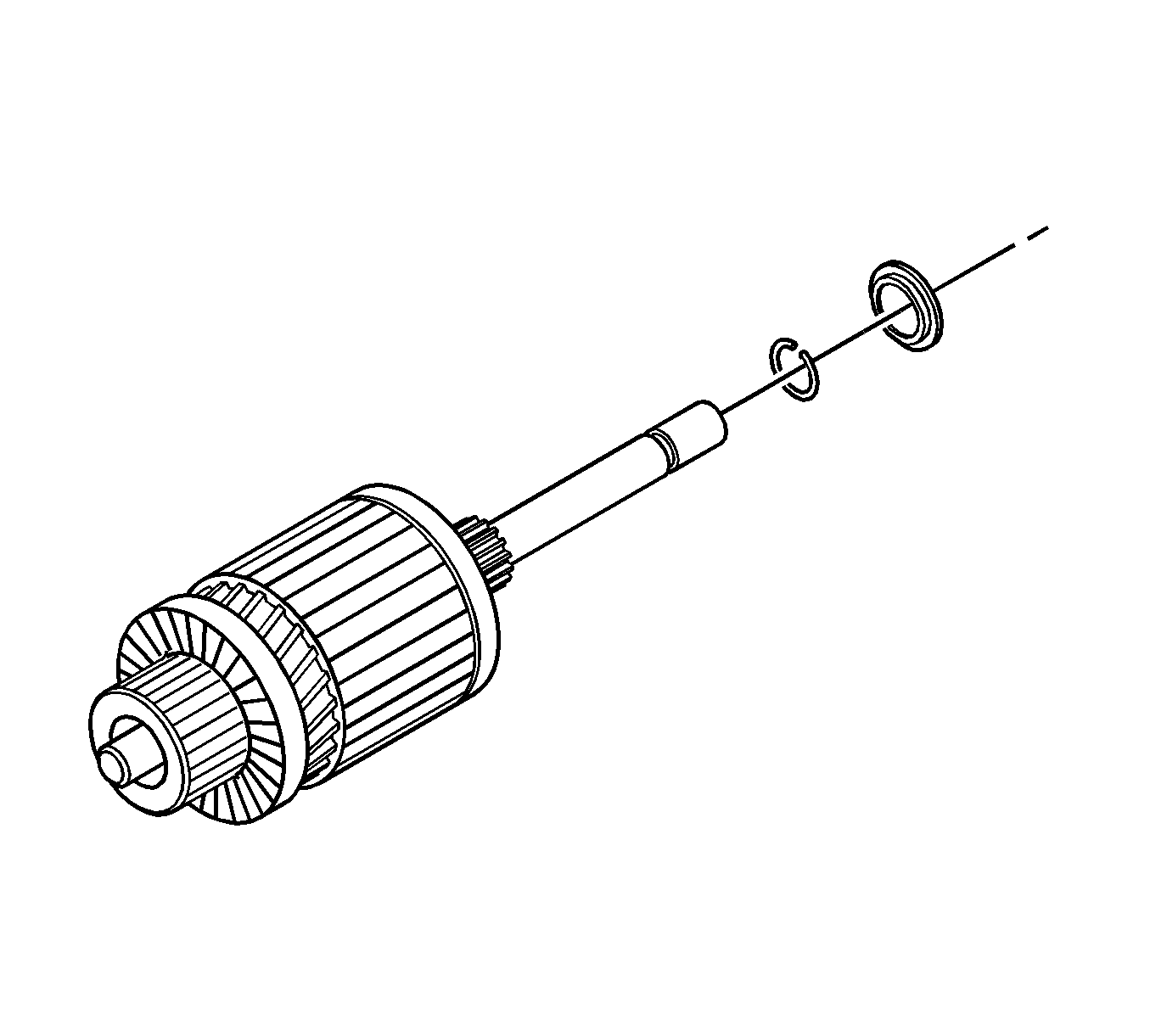
- Remove the locking ring from the groove in the driveshaft.
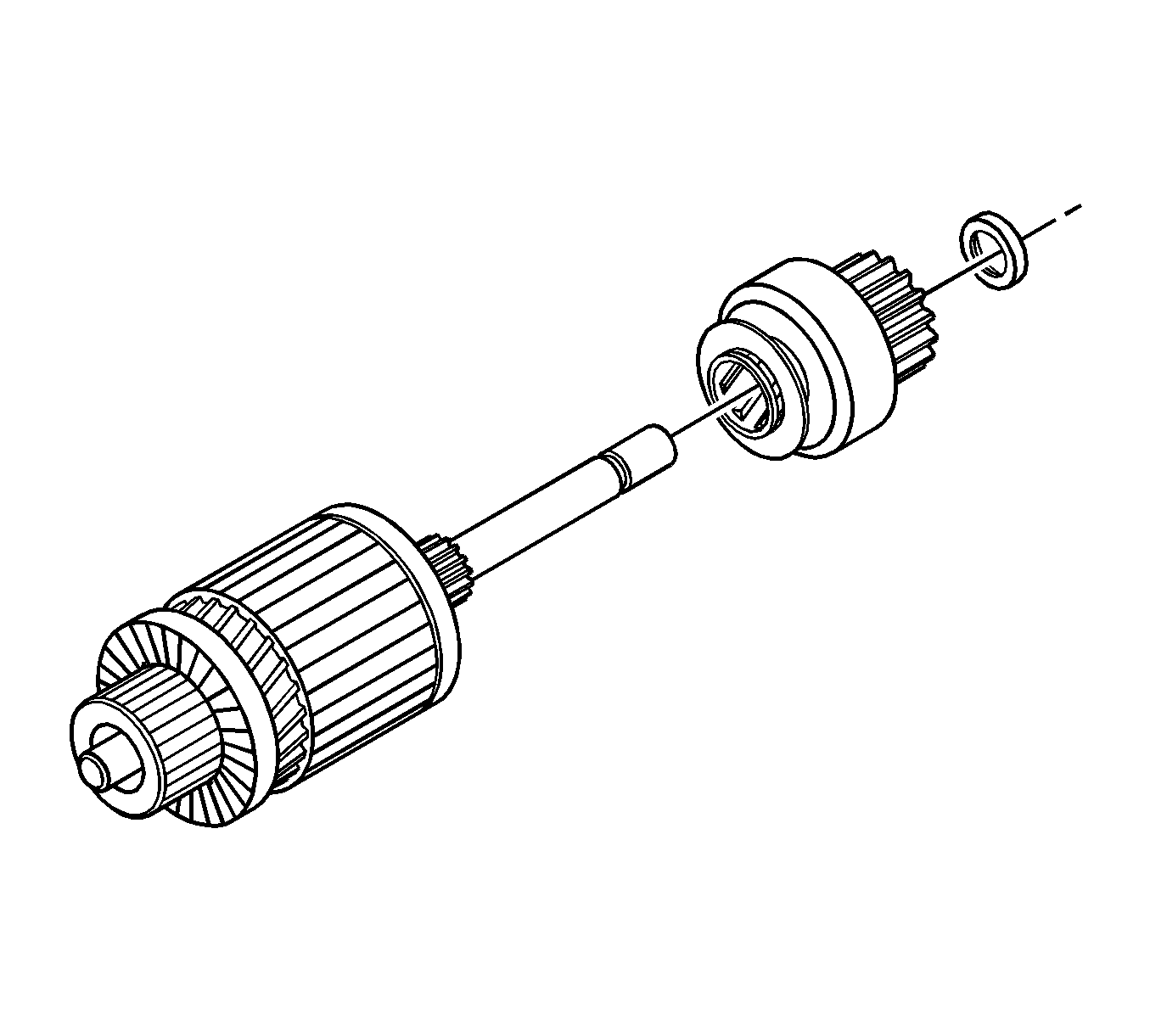
- Remove the pinion stop and the drive from the driveshaft.

- If not done in the previous steps, remove the screws that hold the solenoid assembly into the housing, and remove the nut from the field coil connector.

- Rotate the solenoid 90 degrees and remove it along with the return spring.
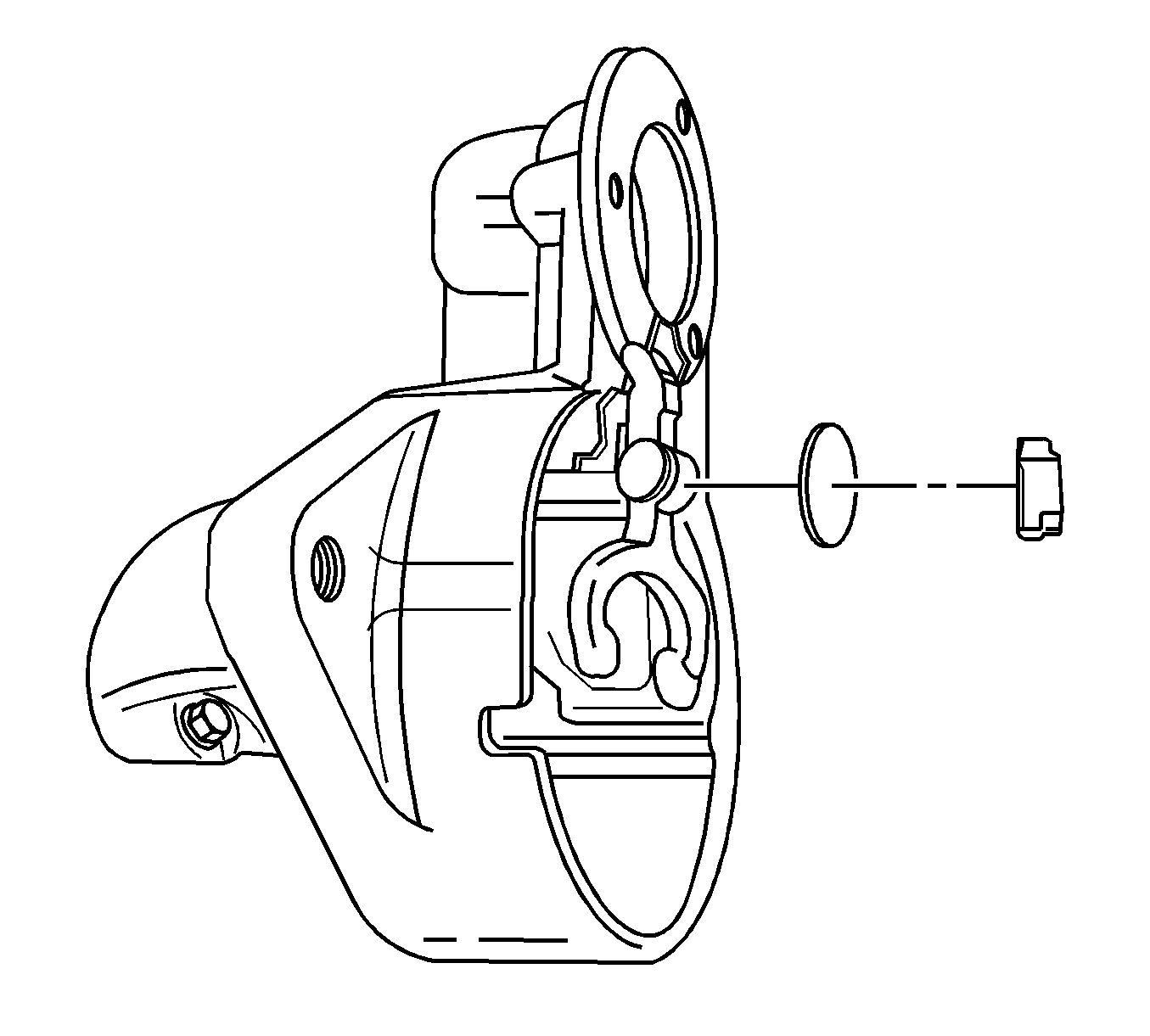
- Remove the plunger with the boot and the shift lever assembly. Test the solenoid windings, if not done in step 11.

Important: The pinion clearance must be correct to prevent the buttons on the shift lever yoke from rubbing on the clutch collar during the cranking.
- When the starter motor is disassembled and the solenoid is replaced, it is necessary to measure the pinion clearance.

- Disconnect the motor field coil connector from the solenoid motor terminal and carefully insulate the connector.
- Connect one 12-volt battery lead to the solenoid switch terminal and the other to the starter frame.
- Flash a jumper lead momentarily from the solenoid motor terminal to the starter frame, allowing shifting of the pinion in the cranking position, where it will remain until the battery is disconnected.
Important: A means for adjusting the pinion clearance is not provided on the starter motor. If the clearance does not fall within the limits, inspect for improper installation and replace all worn parts.
- Push the pinion back as far as possible to take up any movement, and measure the clearance with a feeler gage.
Specifications
The clearance should be 0.25-3.56 mm (0.01-0.14 in).


























